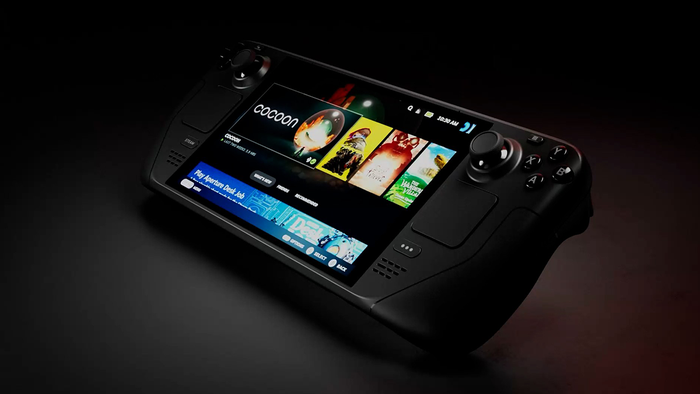The Meta Pro glasses are a big leap forward for augmented reality -- but what will it be like to devleop games for them? Gamasutra speaks to Meta CEO Meron Gribertz to find out.

Google Glass is one stab at augmented reality. Its goal, simply, is to offer useful information and enhance the user's real-life context. In other words, a location-sensitive app might tell you when you're approaching an interesting landmark and help you find it. You can build games with that. It's obvious that something resembling its location-aware MMO Ingress, for Android, will appear on the device. Meta, on the other hand, wants to scan your house and fill it with zombies. Meta is "way, way, way, way more hardcore than any other wearable computer out there right now," CEO Meron Gribetz told Gamasutra this week when demoing a prototype version of its Meta Pro glasses, due in June 2014. "We're the entertainment media consumption gaming wearable computer, whereas Glass is something else." Like many Silicon Valley CEOs, Gribetz firmly believes in the revolutionary nature of his product. "It's a very grand project. We're purporting to become the replacement for phones and computers in the not-too-long run," he says. "We replace the keyboard and mouse... We want people to wear this as much as they use phones and tablets." 
What The Glasses Do
The tech, though expensive -- at $3,000 a pair for the Pro -- is undoubtedly interesting and, let's face it, futuristic. When wearing the glasses, it's like having a transparent HD monitor (at 720p) a few feet directly in front of you. If you look at a white wall, the image is clear; if you look at a person, you can easily see them through it. Though the Meta demo Gribetz showed Gamasutra was primitive in its function and appearance, the potential of the tech is immediately obvious. Meta surrounds you with 3D objects -- and you can reach out and interact with them. That is, of course, where game developers will come in. The glasses have what amounts to an outward-facing Kinect on the front, though the company's CTO tells Gamasutra it's a much more precise and powerful 3D sensor. With it, the glasses gather data from the environment and objects in it. In a game context, you could take that information and build game logic that interacts with the real-world environment, including the player's hands and held objects as well as the floor and walls. Meta glasses will also be proximity-aware and networked "to give each other insight into what each other is doing, in case it's really fun," Gribetz says. "If I'm playing a tabletop game, you can join in."  Meron Gribetz The Pro glasses will be tethered via a slim cable to a pocket PC with an Intel i5 CPU and 4 GB of RAM, which will both process the sensory data and power the games that run on the device. The goal, of course, is to eventually get rid of the PC. Gribetz also expects to increase the glasses' field of view with every iteration -- it's currently 40 degrees, which is a lot less than Oculus Rift, but Gribetz argues that it's a "much more difficult a problem... to do see-through optics... than to do Oculus Rift optics." It's a big step up over Google Glass' 14 degrees.
Meron Gribetz The Pro glasses will be tethered via a slim cable to a pocket PC with an Intel i5 CPU and 4 GB of RAM, which will both process the sensory data and power the games that run on the device. The goal, of course, is to eventually get rid of the PC. Gribetz also expects to increase the glasses' field of view with every iteration -- it's currently 40 degrees, which is a lot less than Oculus Rift, but Gribetz argues that it's a "much more difficult a problem... to do see-through optics... than to do Oculus Rift optics." It's a big step up over Google Glass' 14 degrees.
Developing Games for Meta
According to Gribetz, "the Meta SDK is fully Unity-based," offering a familiar pipeline for game developers, and developers get four months of Unity Pro as part of the package. In fact, he says, Unity CEO David Helgason "is a huge supporter of Meta and augmented reality," and new augmented reality category is opening up in the Unity Asset Store -- at least partially at Gribetz's behest, he claims, to offer "a new focal point that [developers] can work with." Says Gribetz, "From our perspective, we're going to have a lot of open-source game examples" which will be available for download from that source. He has some ideas of what developers might get up to, too: "tabletop gaming is a huge demand for Meta; those laser tag games are a huge category." This is based on the upvote-based Meta pitch system. Developers submit ideas to the community, and then the community votes the most appealing ideas up -- with the most popular first in line Meta dev kits. Gribetz describes it as a "self-selecting democratized killer app machine." Just as interestingly, the Meta App Store won't take the usual 30 percent cut of most similar marketplaces. "We're really not looking to make money off of this," Gribetz says.
But Will the Players Be There?
Of course, there's a very serious question: with such an expensive device, and such a new way of interacting with computers, will there be enough of a user base to develop games for? "If it's fun enough for enough people then yes, the money will come," says Gribetz, which is a pretty big "if." Gribetz acknowledges that the first developers "are just doing it because it's Iron Man... it's for the fun of it, and the passion." He hopes he can build that enthusiastic developer community into Meta loyalists by treating them right. "Our entire first year we're not making a dime off of any hardware or software -- we're doing a penetration push," he says. "Most of the people are doing it for the fun, and I'd say next year they're doing it for the money... We're going to take the hit for the first year as we grow the market, and then next year, we'll all be making money." Gribetz describes the startup as "tooth and nail" fighting to create "a cheap experience, an immersive experience for developers." With the idea-based upvoting system and the fact that Meta isn't going to be taking a big cut of developer revenue, he says, "we believe that those two facts are going to mean that people are going to be able to make money off of this app store, which is launching with the Meta 1 in March." To pre-order a pair of Meta Pro glasses and find out more about their technical specifications and developer program, head to the company's website, at spaceglasses.com.
About the Author(s)
You May Also Like







